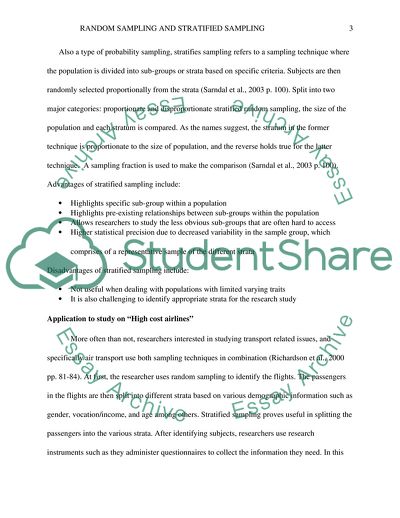Random Sampling and Stratified Sampling Research Paper. https://studentshare.org/marketing/1863340-random-sampling-and-stratified-sampling
Random Sampling and Stratified Sampling Research Paper. https://studentshare.org/marketing/1863340-random-sampling-and-stratified-sampling.


